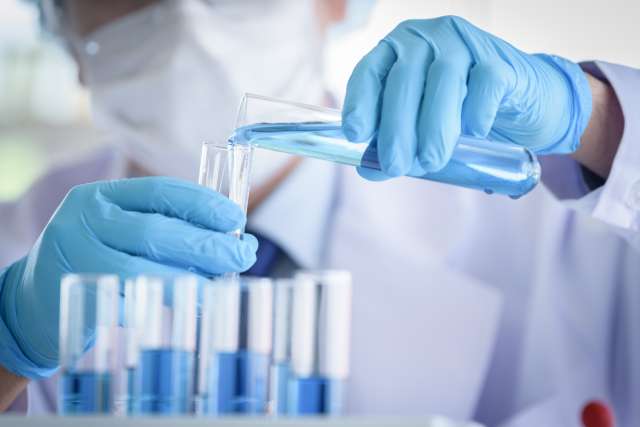In one of the first studies using the RNA in saliva to detect cancer, researchers at UCLA's Jonsson Cancer Center were able to differentiate head and neck cancer patients from a group of healthy subjects based on biomarkers found in their spittle. The study provides a first proof of principle that may result in new diagnostic and early detection tools and will lead to further studies using saliva to detect other cancers.
Published in the Dec. 15, 2004, issue of the peer-reviewed journal Clinical Cancer Research, the study used four RNA biomarkers to detect the presence of head and neck cancer with 91 percent sensitivity and accuracy, said Dr. David Wong, professor and chairman of Oral Biology and Medicine, director of the UCLA School of Dentistry, Dental Research Institute, and a Jonsson Cancer Center researcher.
"This is a new direction, using a non-invasive fluid for disease diagnostics, particularly in cancer," said Wong. "This is our proof of principle. We now hope to demonstrate the utility of saliva for systemic diagnosis of other diseases such as breast cancer."
Typically, cancer researchers use blood serum and urine to look for cancer signatures. Saliva contains the same biomarkers for disease that are found in the blood, but they are present at much lower levels of magnitude. The emergence of nanotechnology allowing scientists to manipulate materials on an atomic or molecular scale helped researchers uncover the components of saliva, Wong said, and "changed the whole scene" for UCLA scientists.
"It gave us the clue to look at what else is in saliva," Wong said.
Of the 3,000 RNA biomarkers found in saliva, Wong and his team discovered that a combination of four provided a detectable signature for head and neck cancer. That signature was identified in cancer patients with 91 percent accuracy.
"This paper explores the translational utility of using saliva for cancer diagnosis," Wong said. "The work is good, but not good enough. Although we were able to identify the head and neck cancer patients with 91 percent sensitivity and accuracy, we missed one out of ten. With a larger study, we will move that specificity and accuracy closer to 100 percent."
In the study, Wong and his colleagues enrolled 32 subjects with head and neck cancers - cancers of the mouth, tongue, larynx and pharynx. They also enrolled 32 age and gender matched subjects without cancer but with the same smoking history to act as a control group. Using their saliva, researchers were able to discriminate the cancer patients from the control group, Wong said.
"We tested the hypothesis that distinct RNA expression patterns can be identified in cancer patients, and the differentially expressed transcripts can serve as biomarkers for cancer detection," the study states. "Moreover, using saliva as a diagnostic fluid meets the demands for inexpensive, non-invasive and accessible diagnostic methodology."
Dr. Judith C. Gasson, director of the Jonsson Cancer Center and a professor of biological chemistry and medicine, called Wong's work exciting.
"This is a perfect example of the type of groundbreaking research the Jonsson Cancer Center encourages and supports," Gasson said.
Wong and other researchers next will attempt to validate the study's findings in a much larger study of about 200 oral cancer patients conducted at UCLA's Jonsson Cancer Center and at four other national centers. The study is now recruiting early and late stage head and neck cancer patients to participate. Study volunteers will need to provide saliva and blood serum to participate. To take part in the UCLA study, volunteers can call 1-888-798-0719.
More than 1.3 million new cases of cancer will be diagnosed in the United States this year alone, resulting in more than 563,000 deaths - one person every minute. The goal of any cancer screening program is to detect tumors at an early stage, when they are most treatable. And the best new screening tools should be inexpensive and non-invasive, so they'll be widely used. The results of Wong's study will open new research directions that may prove saliva is a suitable tool for the development of non-invasive diagnostic, prognostic and follow-up tests for cancer.
The study was funded by the Jonsson Cancer Center and the National Institute of Dental and Craniofacial Research




